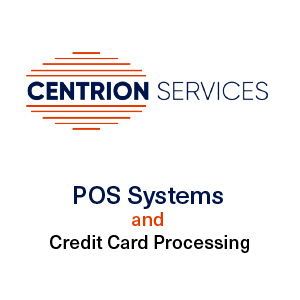In today’s dynamic business landscape, success isn’t merely about hard work; it’s about working smart, with foresight and precision. For aspiring leaders and seasoned executives alike, the journey towards sustainable business growth is paved with two critical disciplines: strategic thinking and analytical thinking. These aren’t just buzzwords; they are fundamental competencies that empower organizations to navigate complexities, seize opportunities, and outmaneuver competition. Programs like the IIM senior management program emphasize the cultivation of these very skills, recognizing their indispensable role in shaping future-ready business leaders.
Strategic Thinking: Charting the Course
Strategic thinking is the ability to see the big picture, anticipate future trends, and formulate long-term plans that align with an organization’s vision and mission. It’s about asking the ‘why’ before the ‘what’ and ‘how.’ A truly strategic thinker doesn’t just react to market shifts; they proactively shape their destiny by identifying opportunities and mitigating threats. This involves:
- Visionary Leadership: Setting a clear, compelling direction for the organization, inspiring stakeholders, and fostering a culture of innovation.
- Environmental Scanning: Continuously monitoring the external environment—including market trends, competitor activities, technological advancements, and regulatory changes to identify potential impacts and opportunities.
- Resource Allocation: Optimizing the deployment of financial, human, and technological resources to achieve strategic objectives.
- Risk Management: Identifying potential risks and developing strategies to minimize their impact, ensuring business continuity and resilience.
- Competitive Advantage: Developing unique value propositions that differentiate the business from its competitors and create sustainable market leadership.
Strategic thinking provides the roadmap for growth. Without it, businesses risk drifting aimlessly, reacting to events rather than orchestrating them. It allows for the proactive identification of new markets, the development of innovative products and services, and the establishment of robust partnerships that drive long-term success.
Analytical Thinking: Navigating with Data
If strategic thinking provides the compass, analytical thinking offers the detailed maps and navigational tools. Analytical thinking is the ability to collect, process, and interpret data to make informed decisions. It involves breaking down complex problems into smaller, manageable components, identifying patterns, drawing logical conclusions, and validating assumptions.
In an era of big data, analytical thinking is more crucial than ever for businesses to:
- Data-Driven Decision Making: Moving beyond intuition to base decisions on concrete evidence, leading to more accurate forecasts and effective strategies.
- Problem Solving: Systematically identifying the root causes of issues, rather than just addressing symptoms, and developing effective solutions.
- Performance Measurement: Establishing key performance indicators (KPIs) and metrics to track progress, evaluate the effectiveness of initiatives, and identify areas for improvement.
- Market Understanding: Analyzing customer behavior, market trends, and sales data to gain deeper insights into consumer preferences and market dynamics.
- Operational Efficiency: Identifying bottlenecks, optimizing processes, and improving resource utilization to enhance productivity and reduce costs.
Analytical thinking transforms raw data into actionable insights. It allows businesses to understand their past performance, assess their current state, and predict future outcomes with greater accuracy. This data-driven approach minimizes risks, maximizes opportunities, and ensures that every decision is backed by solid evidence.
The Synergy: Strategic Vision Meets Analytical Rigor
While strategic thinking and analytical thinking are distinct disciplines, their true power emerges when they are integrated. Strategic thinking provides the overarching framework and direction, while analytical thinking provides the granular insights and validation necessary to execute that strategy effectively.
Imagine a business leader with a brilliant strategic vision but no analytical capability to assess market viability or measure progress; their vision, however grand, is likely to remain unrealized. Conversely, an organization with vast analytical capabilities but no strategic direction risks drowning in data without a clear purpose.
This synergy is vital for:
Informed Strategy Formulation: Analytical insights feed into strategic planning, ensuring that strategies are not based on assumptions but on robust data analysis.
Effective Strategy Execution: Strategic plans are translated into actionable steps, and analytical tools are used to monitor progress, identify deviations, and make necessary adjustments.
Agile Adaptation: In a rapidly changing environment, the combination of strategic foresight and analytical responsiveness allows businesses to adapt quickly to new challenges and opportunities.
Sustainable Growth: By continuously refining strategies based on analytical feedback, businesses can achieve sustained growth, optimize resource allocation, and maintain a competitive edge.
In essence, strategic thinking defines the destination and the broad path, while analytical thinking provides the detailed navigation, ensuring the journey is efficient, effective, and leads to the desired outcome. Together, they form a powerful feedback loop, where insights from analysis inform and refine strategic choices, leading to continuous improvement and innovation.
Practical Application: Cultivating These Skills
For businesses to truly harness the power of strategic and analytical thinking, it’s crucial to foster these skills within their workforce. This isn’t just the responsibility of senior leadership; it’s a mindset that needs to permeate all levels of an organization. Here are some practical ways to cultivate these essential competencies:
- Promote Cross-Functional Collaboration: Encourage teams from different departments to work together on projects. This exposes individuals to diverse perspectives and helps them understand how their work fits into the larger strategic picture.
- Invest in Training and Development: Offer workshops, seminars, and online courses focused on strategic planning, data analysis, critical thinking, and problem-solving. These programs can equip employees with the tools and frameworks they need to think more strategically and analytically.
- Encourage Data Literacy: Make data accessible and understandable to everyone. Provide training on how to interpret data, use analytical tools, and draw meaningful conclusions. Foster a culture where decisions are challenged and supported by evidence.
- Implement Scenario Planning: Regularly engage in exercises that involve envisioning different future scenarios and developing strategies to address them. This helps build foresight and adaptability.
- Foster a Culture of Inquiry: Encourage employees to ask ‘why’ and ‘what if’ questions. Create an environment where curiosity is rewarded, and assumptions are constantly challenged. This promotes deeper thinking and a more analytical approach to problems.
- Mentorship and Coaching: Pair experienced strategic and analytical thinkers with emerging talent. Mentorship can provide invaluable guidance and accelerate the development of these skills.
By actively investing in the development of these skills, businesses can build a workforce that is not only capable of executing tasks but also of contributing to the strategic direction and growth of the organization. This creates a more resilient, innovative, and competitive enterprise, ready to face the challenges and opportunities of the future.
Conclusion: The Path to Enduring Success
In an increasingly complex and competitive global marketplace, the ability to think strategically and analytically is no longer a luxury but a necessity for business growth. These interconnected disciplines empower organizations to not only survive but thrive, transforming challenges into opportunities and visions into tangible realities. From understanding market dynamics to optimizing internal operations, the blend of foresight and data-driven insight is the bedrock of sustainable success.
For those looking to deepen their expertise in leveraging data for strategic advantage, an IIM business analytics course can provide the specialized knowledge and practical skills required to excel in this critical domain. Ultimately, businesses that prioritize the cultivation of both strategic and analytical thinking within their leadership and workforce will be best positioned to achieve enduring growth and maintain a significant competitive edge in the years to come.













